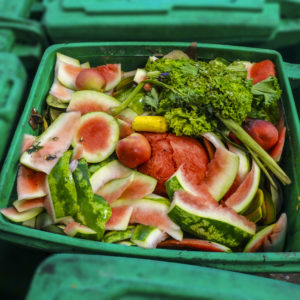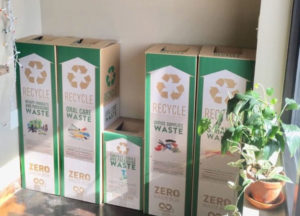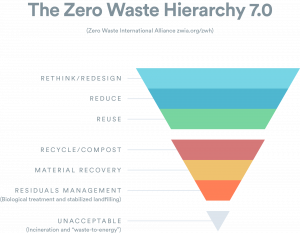
Source: timeout.com
Zero waste and circular economy concepts are often mixed up or used interchangeably. While they both have similar goals, they are two different models that take approaches towards sustainability, greenhouse gas emissions reduction, and ultimately, climate change.
The environmental impacts of our existing “take, make, waste” system is becoming more known that generating less waste through more efficient resource management is crucial to our efforts to reduce those impacts. However, where does the circular economy fit into this idea, and how does zero waste complement it?
Read on to learn about the concepts of zero waste and the circular economy, and how they work together for a cleaner and greener future.
What is zero waste?
The Zero Waste International Alliance (zwia.org) sums the concept up succinctly. Zero waste focuses on:
“the conservation of all resources by means of responsible production, consumption, reuse, and recovery of all products, packaging, and materials, without burning them, and without discharges to land, water, or air that threaten the environment or human health.”
The goal of zero waste is to design and manage the manufacturing and consumption of products in a way that minimizes waste and recovers as many resources as possible while keeping toxic substances out of the environment.
While the idea of conserving resources and recycling has been around for a long time, the term ‘zero waste’ and the movement as we know them today came about in the 1980s as people became conscious of how many resources were ending up in landfill.
What began as a grassroots effort to minimize landfilling and incineration, snowballed into changes in local government legislation and global law over the next few decades.
The buzz around zero waste has grown over the past decade, thanks in part to clear and measurable goals, and because it fits neatly into the sustainability zeitgeist, especially among consumers. This means that many companies have pledged to go “zero waste” by a certain date to show their commitment to sustainability.
However, it’s important to understand the fine print as some businesses are actually implementing “zero waste to landfill”. While eliminating waste through reduction, reuse, and recycling is still part of this goal, many operations take a shortcut with materials that are difficult or expensive to dispose of properly, and simply incinerate them instead, in what is called “waste-to-energy” disposal. This doesn’t meet the Zero Waste International Alliance’s definition of zero waste but still allows companies to make sustainability claims.
Another challenge with zero-waste implementation is the burden of properly recycling or reusing a product and its packaging is typically placed on the consumer.
What is a circular economy?

Imagine you have a garden where you plant a variety of fruits, vegetables, and herbs native to your region, along with flowers and plants that naturally repel local pests. To water this garden, you use only greywater from your sink or bathtub, or rainwater that you collect in barrels. When the food is grown and you’ve consumed it, you compost all garden and food waste putting it back into the ground to provide nourishment for the next growing season, using carefully-maintained tools that are repaired and reused year after year. This could be seen as a small circular economy.
At a simple level, the circular economy is a concept that champions the design of closed-loop systems and the circularity of resources, so that raw materials remain in the supply chain—or the loop as it is otherwise known. The Ellen MacArthur Foundation, a nonprofit that promotes the circular economy, defines it as a system that is:
“restorative and regenerative by design, and aims to keep products, components, and materials at their highest utility and value at all times. … It is a continuous positive development cycle that preserves and enhances natural capital, optimizes resource yields, and minimizes system risks by managing finite stocks and renewable flows.”
Circular economies eliminate waste through design by creating more efficient systems that account for the entire lifecycle of a product, ensuring that the waste that does occur is of as high a quality as possible so natural resources can be reused.
The circular economy concept first arose in the 1960s when ecologists, economists, and academics concerned with pollution and resource exploitation were discussing ideas related to closed and non-linear systems like those found in nature. These ideas stood in stark contrast to the existing linear economies that manufacturers and policymakers were keen to promote.
One well-known theory that influenced the circular economy is cradle to cradle thinking, originally coined by architect and industrial analyst Walter Stahel in 1976. This and similarly-related concepts—like industrial ecology, regenerative design, and biomimicry—gradually gained prominence in the 1980s and 90s, forming the circular economy framework as we know it today.
A circular economy makes use of many of the strategies we already employ to prevent waste, including reduction, repair, and recycling, while also looking to nature itself for clues to designing feedback-rich systems that are robust, adaptive, and promote sustainable functionality that allows resources to regenerate. It also emphasizes clean renewable energy and managed water systems to promote healthy ecosystems.
The word “economy” sounds big, but a circular economy can be a system of any size. A garden can be an example of a circular economy that fits in your backyard, while a company that collects discarded fishing nets from the ocean and recycles them into consumer products in a green and socially-responsible way has created a business based on the circular economy model.
The ultimate goal of the circular economy movement, however, is a system of a global scale, where we can primarily rely on resources we have already harvested, rather than ignoring recyclables and exploiting raw materials.
Zero waste vs. circular economy – What’s the difference?

Source: TerraCycle
So zero waste and a circular economy do have some similarities. They both strive to right the wrongs of our current take-make-waste industrial and economic system, and to eliminate waste. But how are they different?
The differences between zero waste and a circular economy are best explained by looking at the principles of both ideas. Zero waste is guided by principles known as the Zero Waste Hierarchy, an inverted triangle that illustrates waste management in order of preference: Reduce through refusal or redesign, reuse and repair, recycle or compost, recover energy, and finally regulated disposal.

The circular economy model instead has three main principles that are more like pillars that work in tandem: designing out waste and pollution, keeping products and materials in use for the entire lifespan, and regenerating natural systems. While zero waste focuses on keeping waste out of the environment, a circular economy goes one step further by striving to regenerate the environment.
Another slightly more abstract way to think of it is that zero waste is a set of principles that guide us towards a goal, while a circular economy is a model that provides a systematic framework. We can also think of zero waste as a goal, and a circular economy as a means to get there.
In this way, we can see that these two concepts are different yet complement each other in multifaceted ways.
There are also practical differences in the way these two concepts are applied. Going back to the “zero manufacturing waste to landfill” issue, under the definition of zero waste, a company can claim that they have achieved this goal by making their processes more efficient and diverting from landfill through recycling and reuse.
They pass a certain amount of waste onto the consumer, for example, with single-use plastic bottles, which may then end up being incinerated or in landfill. If the company were to take this packaging back for reuse or remanufacturing, or if dedicated recycling systems were in place that redirected these resources back into the loop, then it could be said that they have contributed to a more circular economy.
Our role within a circular economy – Incorporating circular economies into daily life
For the general public and businesses in the US, it’s a lot easier to incorporate zero waste principles into daily life than it is to construct a circular economy. While some of the methods involved—reduce, reuse and repair, and recycle—are a part of both, for the most part, it’s not realistic for a single person or a family to develop their own circular economy.
Yet while economies happen on a larger scale than what occurs between our own “four walls”, we as individuals are an essential part of them and have an important role to play in advancing the new business models that promote more circular approaches. We can, and of course should, reduce our consumption and reuse or recycle whenever possible, but how about borrowing and sharing too?

Source: Loop
Another tenet of the circular economy concept is selling services instead of things. This has a variety of applications, one of which is selling the rights to use goods, but not the goods themselves. You may already be familiar with this in the form of libraries or renting power tools for a home improvement project rather than buying them yourself.
There is also a growing number of local initiatives around the world aiming to wean humanity off single-use plastics by creating systems where reusable containers and packaging are rented. One great example is the startup Loop, which has partnered with major brands and supermarkets to offer popular products in reusable containers.

Anyone can even participate in a circular economy with goods already owned. Gadgets and technology are a great place to start: Why not get broken screens repaired locally? When it comes time to upgrade, recycling old smartphones or donating is an option instead.
Although the concept of a circular economy is indeed complex and difficult to tackle, unlike zero waste, there are still plenty of ways businesses and consumers can participate in and promote circular systems. Check out what kind of circular initiatives exist locally, or look into ways a circular economy can be integrated into your business. Alternatively, subscribe to our blog to stay in the loop and learn more about how you can use zero waste and circular economies to help build a more sustainable future.


